In 1924, American Vogue opined, “At the beginning of beauty lies the beautiful figure. For it is the single thing about a woman that comes nearest to dominating in the ensemble of her attractiveness.”
It may not be able to be said more plainly the import placed upon a sleek physique during the 1920s, as the figure considered ideal shifted away from the voluptuous curves favored during the Edwardian era towards a narrow-hipped, flat-chested look the French termed garçonne—the word for ‘boy’ given an ironic feminine twist. As the undergarments worn beneath gossamer fashions of the 1920s were intended to support the body rather than shape it (as the corset had for previous generations), women were increasingly encouraged by both health and fashion professionals to take steps to shape and tone their bodies through exercise. Articles on the benefits and practices of exercise appeared regularly in the pages of fashion magazines during the 1920s, as did feature articles on the practice of “reducing” via visits to “body culture salons.” There a client would be “given a thorough examination and questioned about her past ills until the specialist has a chart complete as one will find in a doctor’s index of patients. After the diagnosis, special exercises intended to correct faults of figure and carriage are prescribed for her individual case.”
A less clinical approach could be taken at the one—that’s right, one —fitness studio catering to women in Manhattan in 1925. Vogue introduced this concept of what is now essentially the modern-day gym to its readers by admitting that, “it may be a new suggestion to many who have not yet experienced the physical and mental satisfaction that comes from a sensible health course.” Women paid a membership fee and were allowed to come in as frequently as they wished to exercise at the “beautifully equipped” studio “with a sunny gymnasium, a handball court, and immaculate bath and massage rooms.”
It is here in the 1920s that we see the foundation of the women’s health and fitness industry as we know it today.
The publication La Culture Physique de la Femme Elégante is an exquisitely rare and beautiful testament to these early days of the widespread promotion of fitness for women. It was issued as a folio containing twelve pochoir plates on board depicting women in a variety of calisthenic poses. It’s French preface begins, “Who is the woman that does not wish to stay beautiful or become so?” and continues on to extol the benefits of exercise and recommend the services of one Dr. Mortat to any woman who wished to, “breathe better, have better deportment and, above all, not gain weight.” The illustrations are the work of Germaine-Paule Joumard, who was also the director of several pochoir fashion magazines of the era including Trés Parisien and Les Idées Nouvelles de la Mode.
A special thank you to Ursus Books, NYC for helping us obtain this title, which is held in the collections of only two other public institutions worldwide.
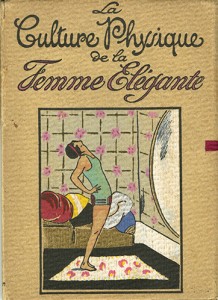
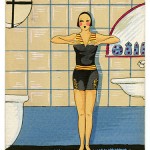
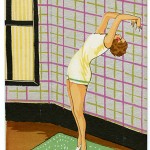
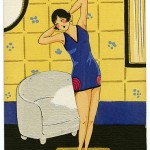
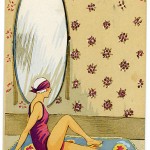
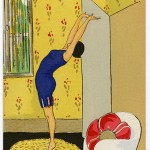
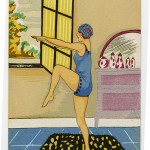
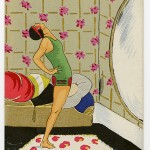
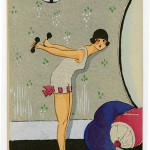

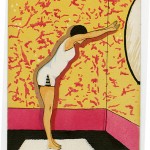
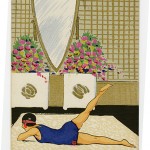
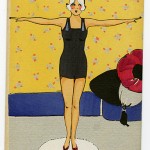
9 responses to “The Fit Flapper”
What beautiful plates! The poses don’t look all that rigorous, though.
Très beau (le pochoir).
[…] How did the flapper stay fit? […]
[…] Calahan, of a Fashion Institute of Technology’s blog Material Mode, writes that a French prologue to La Culture Physique endorsed that readers find out “the services of […]
Is there any way I can get some larger images of these prints to make my own? I would love to print them up and frame into a collection for the home. Saw this from Slate.com…
[…] Calahan, of the Fashion Institute of Technology’s blog Material Mode, writesthat the French preface to La Culture Physique recommended that readers seek out “the services […]
Yes, I would also love to order a print or two suitable for framing. Please let the world know if that’s possible! Thanks!
Very awesome image, I’ll save it. Thanks
Fitness is always good and La Culture Physique de la Femme Elégante looks interesting. I like the rare images that you have shared in this post. Keep up the good work.